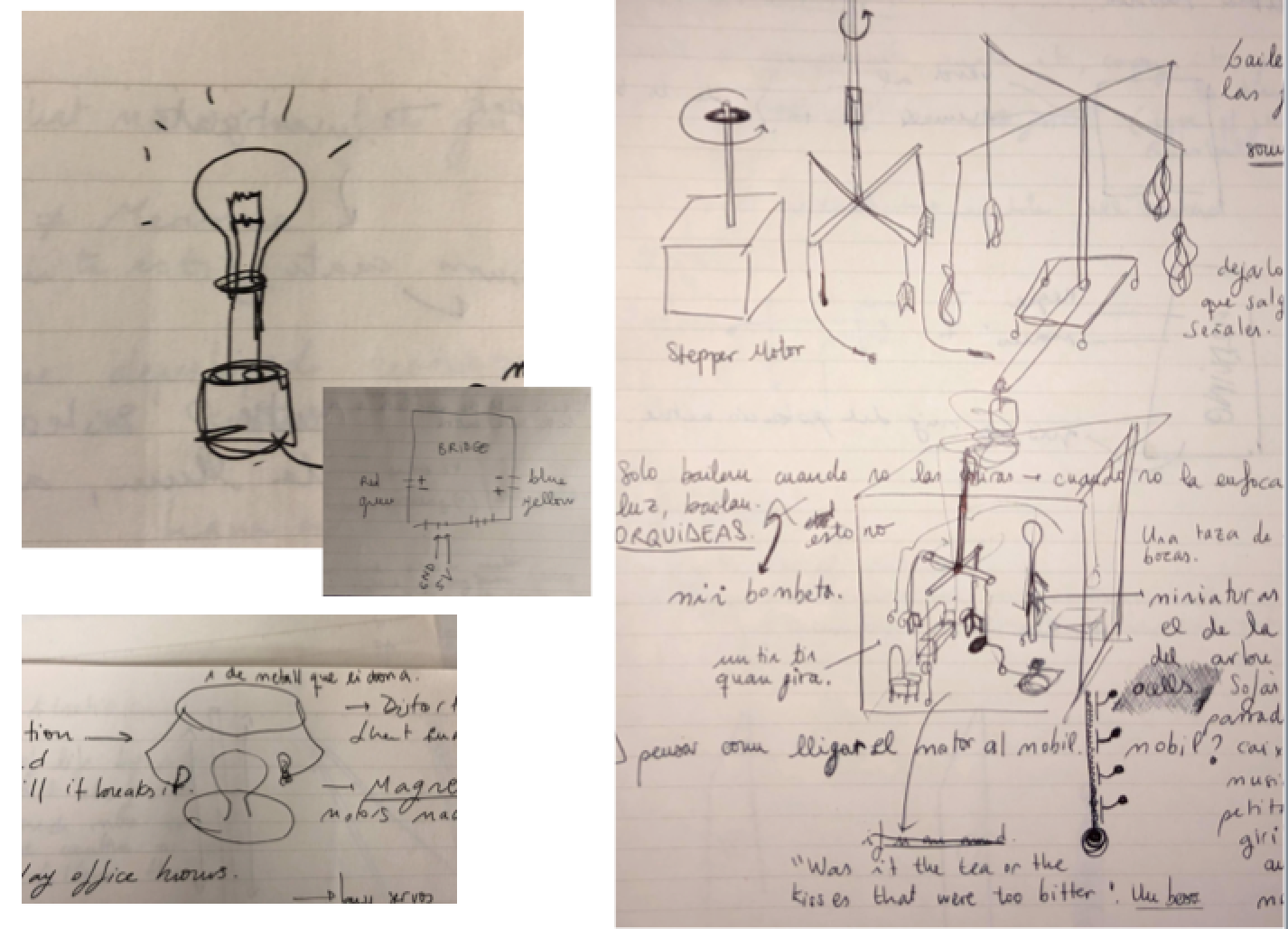In-Habitat
“Habitat” – Noun - The natural home or environment of an animal, plant, or other organism.
This project is a self-enclosed habitat that reacts to and senses itself. Instead of considering “the habitat” something external to whom is sensing it (the habitant), I considered the habitat and the inhabitant the same thing, so the habitat senses itself. Therefore, it creates a system enclosed in itself sensing and reacting to its inner movements. That’s how I came up with the idea of a system of motors and servos that would create other actions.
produced by: Julia Creuheras
Introduction
I like to think of it as “What objects do when you are not looking at them.” Who has ever seen what objects do when you don’t look at them? I like to imagine them moving and having fun. The little engine represents an abstract house. Many objects live in this house and many actions are activated.
Through this project I want to enhance the beauty of technology and objects. By depriving technology and objects of its embedded usefulness, what remains and blooms is their inner beauty.
If you name something, you negate it. Giving it a name, a label, you negate all the other things it could possibly be. Defining things to exist in a certain way is a way of limiting the infinite possibilities of interaction that we could have with the world of entities to only one or a few. It’s a way of killing or dying. I aim to question and re-examine the fixed identity we attribute to that which we conform. Taking as a departure point the re-examining of these identities, by means of observing the things as such and not as socially prebuilt space-time contextualized identities. When I see a chair, and I am seeing a predefined object in my subconscious that has a marked utility and as a consequence I will have a very pre-established relationship with it (so I will sit on it). I see a chair, but I don’t see a simple shape that can be reinterpreted every time I bump into it because I don’t see through the pre-established ideas I have of her. As I see a chair, I don’t see a table so I will never use as that. I am limiting its existence to a single prefabricated possibility based on my social or collective subconscious. So, by reinterpreting different objects and seeing shapes beyond their usefulness, we can turn a fork into a comb, a chair on a table or a pencil sharpener into a small potato peeler. On the edges of the absurd appears a door that leads to a renewal of form and identity.
The machine is made of miniature objects we could find in a house, but their utility is neglected (not only because of their size) but because they are being used for useless actions.































































